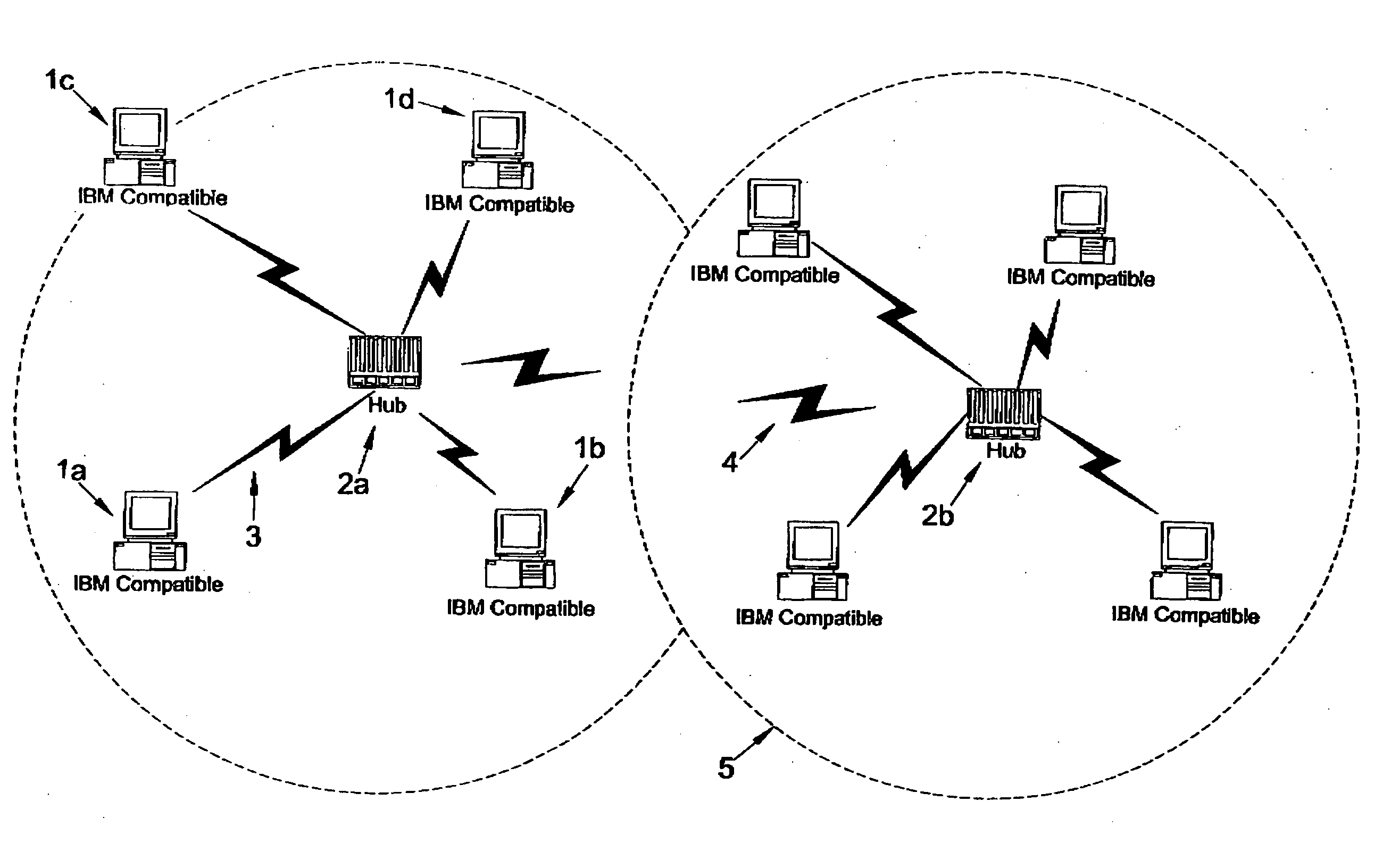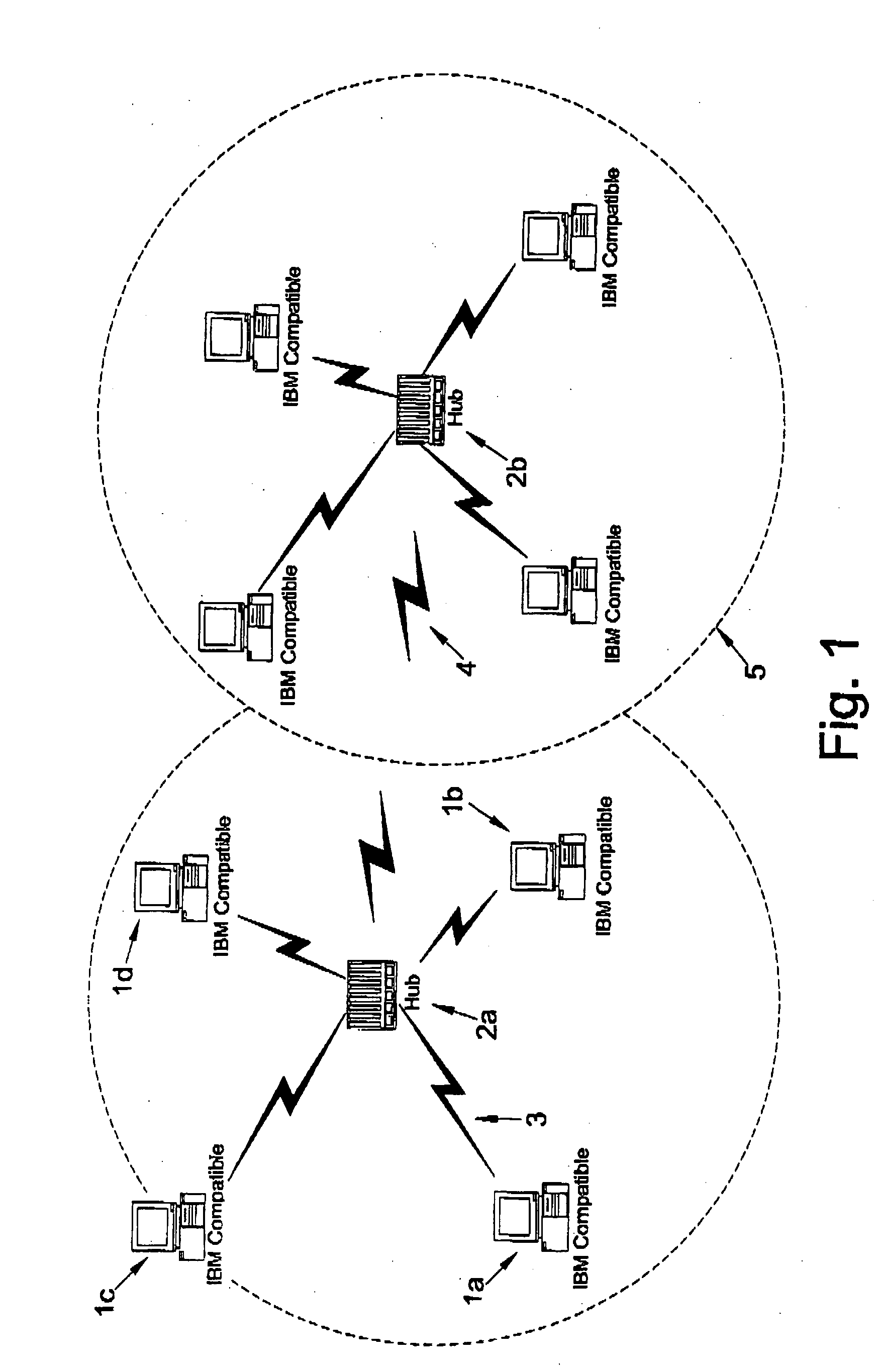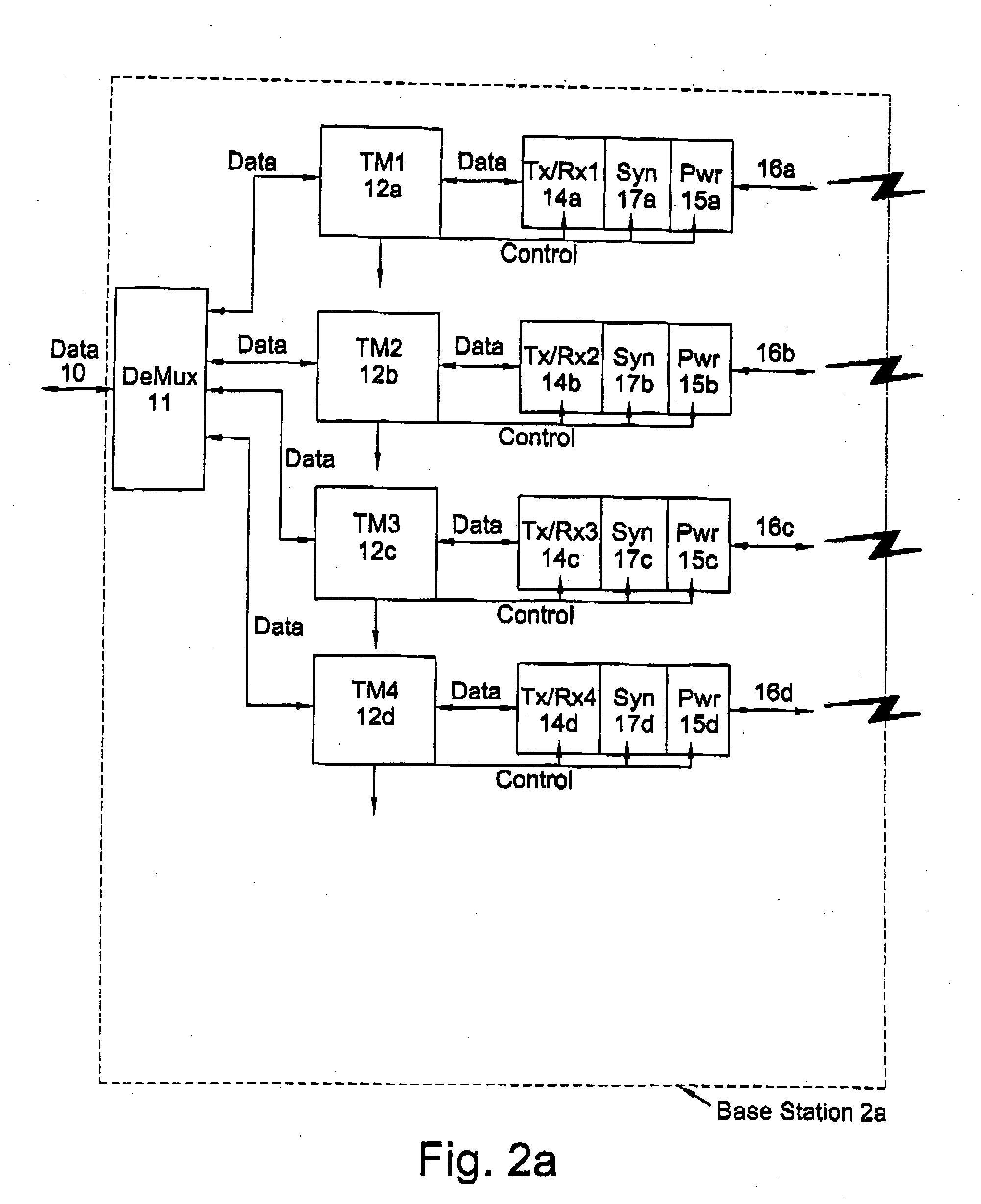Methods of controlling transmission power levels in air interface channels
a transmission power level and air interface technology, applied in the field of wireless communications, can solve the problems of large delays and higher interference levels of lower qos traffic, and achieve the effect of reducing interference levels and high quality
- Summary
- Abstract
- Description
- Claims
- Application Information
AI Technical Summary
Benefits of technology
Problems solved by technology
Method used
Image
Examples
Embodiment Construction
[0027]FIG. 1 shows an embodiment comprising a wireless network having one or more base stations or hubs 2 wirelessly coupled to a number of mobile stations 1. The network is arranged into one or more coverage areas 5. These coverage areas 5 might be PAN's (Personal Area Network) each comprising a number of collocated Bluetooth™ piconets each servicing a different mobile station 1 within the PAN. Alternatively the network might be a WLAN (Wireless Local Area Network) comprising adjacent or overlapping IEEE802.11 coverage areas 5 or a combination of PAN and WLAN. Wireless signals 3 couple each mobile station 1 to its corresponding base station 2. These signals 3 may also travel into adjacent areas 5 causing (especially) co-channel and adjacent channel interference (shown generally as 4).
[0028]FIG. 2a is a schematic of a base station or access point 2a providing four air interface channel processing chains (shown generally as 16a, 16b, 16c, 16d) for communicating with mobile stations ...
PUM
 Login to View More
Login to View More Abstract
Description
Claims
Application Information
 Login to View More
Login to View More - R&D
- Intellectual Property
- Life Sciences
- Materials
- Tech Scout
- Unparalleled Data Quality
- Higher Quality Content
- 60% Fewer Hallucinations
Browse by: Latest US Patents, China's latest patents, Technical Efficacy Thesaurus, Application Domain, Technology Topic, Popular Technical Reports.
© 2025 PatSnap. All rights reserved.Legal|Privacy policy|Modern Slavery Act Transparency Statement|Sitemap|About US| Contact US: help@patsnap.com



